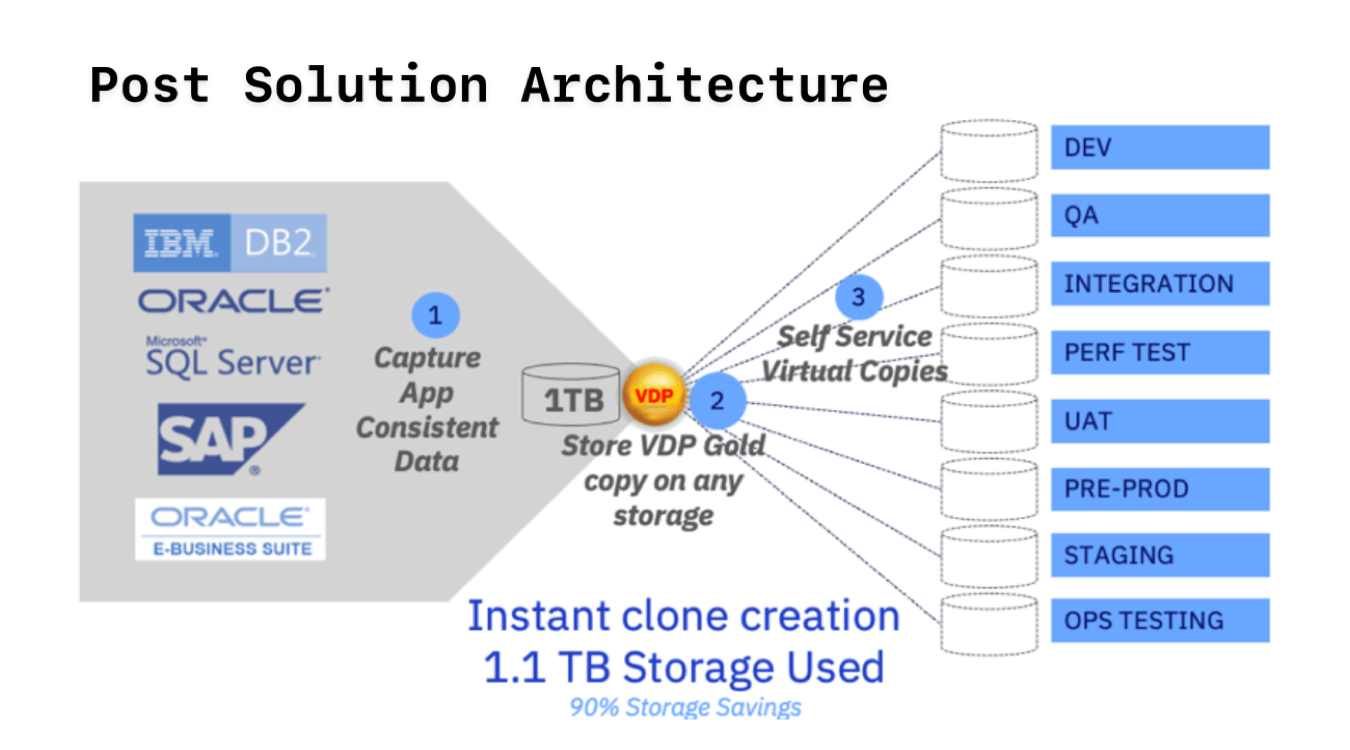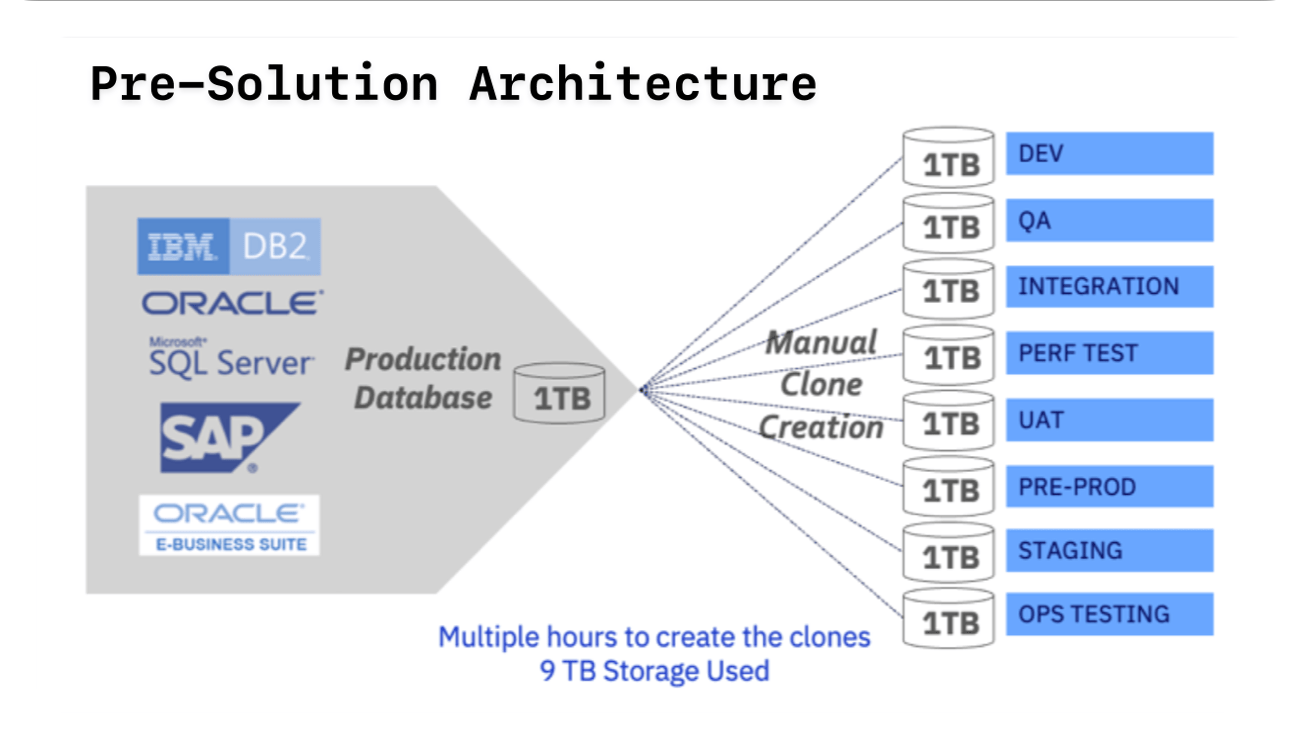Data Masking, Backup Optimization

- Published on
- Duration
- 4 months
- Role
- Project Lead
- Atmosphere
- Time-Critical and Impactful
- Technology
- Virtual Data Pipeline, SQL Server, Python

Business Opportunity
Imagine an insurance company facing bottlenecks because its data management processes just couldn't keep up. That’s where we stepped in—armed with a plan to enhance their data masking and backup systems. Sure, they had a masking solution already, but like a racecar with a leaky fuel tank, it wasn’t running efficiently enough for the Test, QA, and Development teams.
Business Problem
The development team faced a tedious two-hour SQL Server backup process that really slowed them down. They needed data fast, but the 1.3 TB of server data they dealt with—and the added layer of an obfuscation algorithm—made it anything but speedy. With tight project deadlines, waiting hours for data backups and clones just wasn’t cutting it.

Engagement Scope
Initially, we were brought in just to look at data masking, but things escalated quickly. It became clear that the whole data backup and cloning process needed a serious overhaul. Using Virtual Data Pipeline (VDP) technology they already had, we aimed to transform their workflow from sluggish to swift. The goal? Dramatically reduce the time spent on backups and give the development team more autonomy over their data access.
Solution
Proposed Solution
The solution? Simple: Virtual Data Pipeline. This technology took their data backups from hours to minutes and allowed users to create their own SQL Server copies, moving data easily between servers. On top of that, we implemented a robust data masking process to ensure sensitive information stayed secure, even when cloned for testing.
Key Components & Capabilities
- Rapid Cloning & Backup: Backup times went from hours to minutes, slashing the process by 99%.
- Self-Service Data Access: The development team got the freedom to create clones and access fresh data, without waiting for IT.
- Real-Time Production Data: No more working with outdated data—everything was fresh and ready for accurate testing and development.
Business Outcomes
As the project lead, I was responsible for getting this initiative off the ground. This meant leading initial meetings, gathering key requirements, and overseeing everything from on-site assessments to working with the vendor's team to implement the latest VDP upgrade.
Key Technical Decisions
One of the biggest decisions? Focusing more on backup and cloning enhancements than the original data masking request. Sure, masking was important, but the real bottleneck was the slow data workflows. By prioritizing speed, we opened up new possibilities for the entire team.
Alternative Solutions Considered
We did consider alternative solutions for managing test data, but after digging deeper, VDP emerged as the clear front-runner. While it meant a smaller deal size at first, it also led to long-term trust and more business down the road—sometimes, it’s better to play the long game!
Results & Implications
The results speak for themselves:
- Efficiency: Backup times dropped dramatically, which allowed the dev team to focus on what they do best—building and innovating.
- Empowered Teams: The QA and Dev teams no longer had to wait for fresh data. They could access cloned production data on-demand, creating a more efficient testing process.
- Cost Savings: More efficient data management led to reduced storage costs and better resource utilization.
- Improved QA: Faster testing cycles meant better quality control, and no more delays from data backups.

Key Insights and Best Practices
- Stakeholder Relationships Matter: Early and consistent engagement with stakeholders ensured that we were aligned and on track, making it easier to adapt when things changed.
- Collaborative Expertise is Key: Bringing in the right experts at the right time filled knowledge gaps and made the project run smoothly.
- Proactive Communication: Clear, consistent communication kept the project moving and prevented any potential issues from escalating.